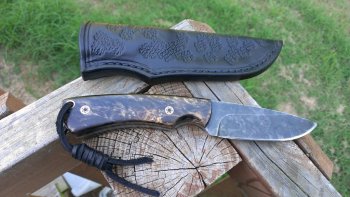N.N
Well-Known Member
I've not been using stabilized wood. I know all the stuff, lasts longer, yada yada....I just think I'd rather use wood than plastic that use to be wood. Knowing this, I stick with the hard stuff, tight grains and smaller pores, naturally oily and resinous.
With that said I've got a few questions on finishes and would like to know what everybody out there uses.
First I guess, how many people use non stabilized wood and if so how do you finish it?
At this point, I've been oiling the wood for several days and then a few coats of briwax. It's worked pretty well at this point for me. However, I've realized my customers might not want to have to refinish or take care of the wood like that.
So how about other methods like Urethane? I think this would lead to that plastic wood I'm trying to stay away from.
I've heard about using super glue. How does that turn out? How do you do it, oil it first, etc.??
With that said I've got a few questions on finishes and would like to know what everybody out there uses.
First I guess, how many people use non stabilized wood and if so how do you finish it?
At this point, I've been oiling the wood for several days and then a few coats of briwax. It's worked pretty well at this point for me. However, I've realized my customers might not want to have to refinish or take care of the wood like that.
So how about other methods like Urethane? I think this would lead to that plastic wood I'm trying to stay away from.
I've heard about using super glue. How does that turn out? How do you do it, oil it first, etc.??

